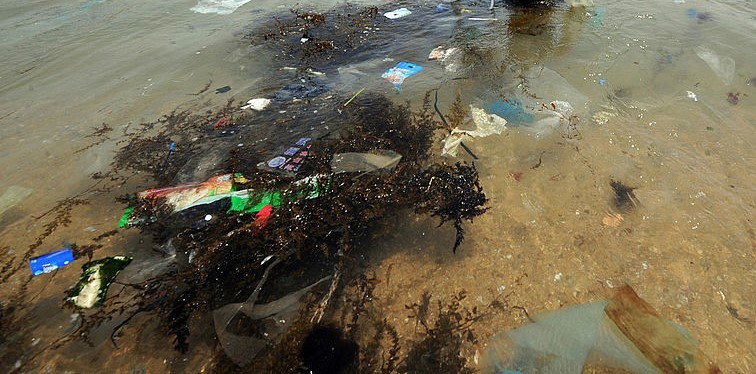
The Great Pacific Garbage Patch cleanup effort will make 1.8 trillion plastics available for recycling into other products or energy-producing incineration.
The vast garbage patch is made up of billions of pieces of plastic and other rubbish, which are being removed by The Ocean Cleanup using cutting-edge equipment.
Great Pacific Garbage Patch
The North Pacific Ocean has a floating vortex of trash known as the Great Pacific Garbage Patch (GPGP). From California to Japan, it covers an area of more than 600,000 square miles, with Hawaii in the center.
The rubbish discovered in the GPGP is diverse in kind and size, but plastic makes up the majority of it.
Only 8% of the GPGP's total mass is made up of microplastics, yet they have a significant impact. 94% of the 1.8 trillion estimated plastic fragments floating in the GPGP are microplastics, according to a 2018 study published in the journal Scientific Reports.
Plastic Pollution
Marine life is threatened by plastic pollution in the ocean in a variety of ways, including by poisoning and starving fish, as well as bleaching coral, and damaging reefs.
Oceanic plastic is one of the most concerning environmental problems we now face, not only because it interferes with ocean ecosystems but additionally because it is extremely difficult to collect and dispose of.
Plastics, in contrast to other materials, don't dissolve; they constantly degrade into microplastics but never entirely vanish. Collecting marine plastic pollution is almost impossible due to the often microscopic-sized microplastics circulating inside our striated, huge, and deep seas.
Great Pacific Garbage Patch Cleanup
A nonprofit organization called The Ocean Cleanup employs a variety of technology to gather garbage from the seas and stop it in rivers before it reaches the oceans.
System 002, commonly referred to as "Jenny," is the focus of both proponents and detractors of the Ocean Cleanup. Jenny drags a U-shaped catchment system across the ocean's surface using two fuel-powered ships. When Jenny is fully laden with trash, it transfers the waste to a bigger boat where it is discharged and brought onshore.
Recycle Or Incinerate
According to The Ocean Cleanup, the majority of the plastic it gathers is recycled. the group says that some of the plastic is used to make useful and enduring items.
According to Dezeen, the remaining useless, non-recyclable plastic waste is burned to produce power. Thermal recycling is the term used to describe this waste-to-energy conversion process.
However, some specialists disagree with The Ocean Cleanup's strategy for eliminating ocean plastic waste. The assertion made by The Ocean Cleanup regarding recycled plastic "sounded very optimistic," according to Dezeen. This statement may have been motivated by the reality that just a small percentage of plastic - only approximately 5% in the US - is really recycled.
Making electricity from plastic garbage is another issue. It has been established that the thermal recycling of plastic results in the release of poisons and pollutants into the air, soil, and water, endangering human health.
Saving Marine Life
The Ocean Cleanup is cleaning ocean waste that affects marine life, despite the criticism it has received.
According to Miriam Goldstein, the Center for American Progress director of ocean policy, while the desire to assist the ocean is admirable, preventing plastic from entering the ocean in the first place is by far the best thing that can be done.
Ocean scientists concur that there must be a reduction in the use of plastic to have a long-lasting good influence on marine life, seas, and the environment.
Plastic garbage can be prevented from entering the ocean by collecting it before it reaches our oceans in addition to producing less plastic pollution. River interceptors from The Ocean Cleanup and Baltimore's famed Mr. Trash Wheel are two initiatives that are actively attempting to achieve this, The Cool Down reports.
© 2025 NatureWorldNews.com All rights reserved. Do not reproduce without permission.





